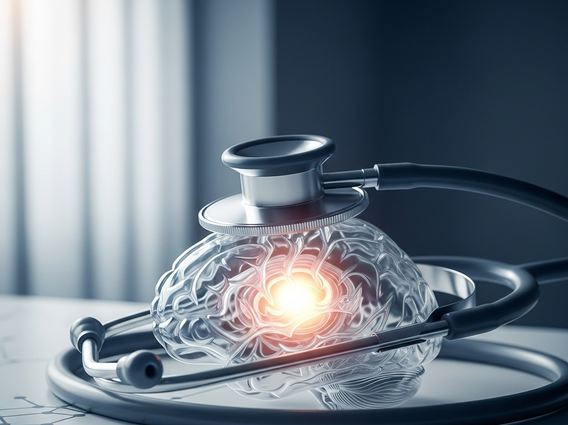Hormones and Cancer
Hormones are powerful chemical messengers that regulate many bodily functions, from growth and metabolism to reproduction. However, their intricate role extends to cellular processes, and in some cases, they can significantly influence the development and progression of cancer.

Key Takeaways
- Hormones can stimulate the growth of certain cancer cells by binding to receptors on their surface.
- Breast, prostate, and ovarian cancers are among the most common types linked to hormonal influences.
- Lifestyle choices, genetics, and environmental factors all contribute to an individual’s hormone-related cancer risk.
- Hormone therapy is a vital treatment strategy for many hormone-sensitive cancers, aiming to block hormone production or action.
- Preventative measures, including healthy lifestyle and regular screenings, can help reduce the risk of hormone-related cancers.
The Role of Hormones in Cancer Growth
The intricate relationship between hormones and cancer is a critical area of study in oncology. Hormones act as signaling molecules, guiding various cellular activities. In the context of malignancy, certain hormones can inadvertently fuel the proliferation of cancer cells, making them a key target for both understanding and treating the disease.
How hormones affect cancer cells
Cancer cells, much like healthy cells, often possess receptors on their surface that can bind to specific hormones. When a hormone attaches to its corresponding receptor, it can trigger a cascade of internal signals that instruct the cell to grow, divide, or survive. For hormone-sensitive cancers, this hormonal stimulation can accelerate tumor growth. Understanding precisely how do hormones affect cancer cells is crucial for developing targeted therapies that block these growth pathways.
Link between hormones and cancer development
The link between hormones and cancer development is well-established for several cancer types. Chronic exposure to certain hormones, or imbalances in their levels, can create an environment conducive to cellular changes that may eventually lead to cancer. For instance, prolonged exposure to estrogen has been implicated in breast and endometrial cancers, while androgens play a significant role in prostate cancer. This hormonal influence can initiate tumor formation or promote the progression of existing precancerous lesions.
Key hormones involved in cancer growth
Several hormones are particularly noted for their role of hormones in cancer growth. These include:
- Estrogens: Primarily estradiol, estrone, and estriol. These female sex hormones are strongly linked to breast, ovarian, and endometrial cancers. They can stimulate the growth of cancer cells that have estrogen receptors.
- Androgens: Such as testosterone and dihydrotestosterone (DHT). These male sex hormones are critical drivers of prostate cancer growth.
- Progesterone: Often works in conjunction with estrogen, influencing endometrial and breast cancer development.
- Insulin and Insulin-like Growth Factors (IGFs): High levels of insulin and IGF-1 have been associated with an increased risk of several cancers, including colorectal, breast, and prostate cancer, by promoting cell proliferation and inhibiting apoptosis.
- Thyroid Hormones: While less direct, imbalances in thyroid hormones have been studied for their potential links to thyroid cancer and other malignancies.
Types of Cancer Linked to Hormones
A significant number of cancers are influenced by hormones, meaning their growth can be either stimulated or inhibited by the presence or absence of specific hormonal signals. Identifying these types of cancer caused by hormones is fundamental for effective diagnosis and treatment strategies.
Breast cancer and hormones
Breast cancer is perhaps the most widely recognized hormone-related cancer. A large percentage of breast cancers are “hormone receptor-positive,” meaning their cells have receptors for estrogen (ER+) and/or progesterone (PR+). These cancers rely on these hormones to grow. This understanding has revolutionized treatment, leading to therapies that block hormone production or their ability to bind to cancer cells.
Prostate cancer and hormones
Prostate cancer is another prominent example of a hormone-sensitive malignancy. The growth of prostate cancer cells is often driven by androgens, primarily testosterone. Androgen deprivation therapy (ADT), which aims to reduce the levels of these hormones or block their action, is a cornerstone of prostate cancer treatment, especially for advanced stages.
Other hormone-related cancers
Beyond breast and prostate cancer, several other malignancies exhibit a strong connection to hormonal influences:
- Ovarian Cancer: While complex, some types of ovarian cancer are influenced by reproductive hormones, and factors like early menstruation, late menopause, and nulliparity (never having given birth) are associated with increased risk.
- Endometrial Cancer: This cancer of the uterine lining is strongly linked to estrogen exposure, particularly unopposed estrogen (estrogen without sufficient progesterone). Obesity, which increases estrogen levels, is a significant risk factor.
- Thyroid Cancer: Although the exact mechanisms are still being researched, thyroid hormones themselves play a role in the growth and differentiation of thyroid cells, and imbalances can contribute to cancer development.
- Adrenal Cancer: Cancers of the adrenal glands can sometimes produce excess hormones, leading to various symptoms and contributing to tumor growth.
Understanding Hormones and Cancer Risk
Grasping the factors that modulate an individual’s susceptibility to hormone-related cancers is key to both prevention and early detection. The interplay of genetics, lifestyle, and environmental exposures contributes significantly to understanding hormones and cancer risk.
Factors influencing hormone-cancer risk
Several factors can influence an individual’s risk of developing hormone-sensitive cancers. These include:
- Age: The risk for many cancers, including hormone-related ones, increases with age as cumulative exposure to hormones and other risk factors accumulates.
- Obesity: Adipose tissue (body fat) can produce and store estrogen, leading to higher circulating levels, which increases the risk of breast and endometrial cancers.
- Reproductive History: Factors like age at first menstruation, age at menopause, number of pregnancies, and use of hormone replacement therapy can all impact lifetime hormone exposure.
- Environmental Exposures: Certain chemicals, known as endocrine-disrupting chemicals (EDCs), can mimic or interfere with natural hormones, potentially affecting cancer risk.
Genetics and hormones in cancer development
Genetics plays a crucial role in modulating how hormones interact with the body and influence cancer risk. Inherited genetic mutations, such as those in the BRCA1 and BRCA2 genes, significantly increase the risk of breast and ovarian cancers, partly by affecting how cells respond to hormonal signals and repair DNA damage. Similarly, genetic predispositions can influence hormone metabolism and receptor sensitivity, thereby impacting an individual’s susceptibility to hormone-driven malignancies. This complex interaction highlights why some individuals are more prone to developing these cancers than others, even with similar hormonal exposures.
Lifestyle’s impact on cancer risk
Lifestyle choices have a profound lifestyle’s impact on cancer risk, particularly for hormone-related cancers. Maintaining a healthy weight through diet and exercise can help regulate hormone levels, reducing the risk associated with excess estrogen or insulin. Limiting alcohol consumption, avoiding tobacco, and adopting a diet rich in fruits, vegetables, and whole grains can also positively influence hormonal balance and overall cancer prevention. These choices empower individuals to take proactive steps in mitigating their risk.
Hormone Therapy for Cancer Treatment
Hormone therapy is a cornerstone in the treatment of many hormone-sensitive cancers, offering a targeted approach to control disease progression. This therapeutic strategy aims to either block the production of hormones or prevent them from binding to cancer cells, thereby inhibiting their growth.
How hormone therapy works for cancer
The principle behind how hormone therapy works for cancer is to disrupt the hormonal pathways that fuel cancer cell growth. For cancers that are hormone receptor-positive, hormone therapy can be highly effective. It can work in several ways:
- Blocking hormone receptors: Medications like tamoxifen for breast cancer bind to estrogen receptors on cancer cells, preventing estrogen from attaching and stimulating growth.
- Reducing hormone production: Aromatase inhibitors (e.g., anastrozole, letrozole) block an enzyme that converts other hormones into estrogen, primarily in postmenopausal women. LHRH agonists (e.g., leuprolide) reduce the production of sex hormones by the ovaries or testes.
- Removing hormone-producing organs: In some cases, surgical removal of ovaries (oophorectomy) or testes (orchiectomy) may be performed to eliminate the primary source of sex hormones.
Managing side effects of hormone therapy
While effective, hormone therapy for cancer side effects can be significant and vary depending on the specific treatment. Common side effects often mimic menopausal symptoms, such as hot flashes, night sweats, vaginal dryness, and mood swings. Other potential side effects include fatigue, joint pain, bone thinning (osteoporosis), and an increased risk of blood clots. Healthcare providers work closely with patients to manage these side effects through medication, lifestyle adjustments, and supportive care, aiming to maintain quality of life throughout treatment.
Different types of hormone therapy
The choice of hormone therapy depends on the specific cancer type, its hormone receptor status, the patient’s age, and overall health. Here’s a summary of common types:
| Therapy Type | Mechanism of Action | Commonly Used For |
|---|---|---|
| Selective Estrogen Receptor Modulators (SERMs) | Block estrogen receptors on cancer cells | ER+ Breast Cancer |
| Aromatase Inhibitors (AIs) | Block estrogen production in postmenopausal women | ER+ Breast Cancer (postmenopausal) |
| Luteinizing Hormone-Releasing Hormone (LHRH) Agonists/Antagonists | Reduce hormone production by ovaries/testes | Prostate Cancer, ER+ Breast Cancer (premenopausal) |
| Androgen Receptor Inhibitors | Block androgen receptors on cancer cells | Prostate Cancer |
| Androgen Synthesis Inhibitors | Block androgen production | Prostate Cancer |
Preventing Hormone-Related Cancers
While not all cancers are preventable, there are significant steps individuals can take to reduce their risk of developing hormone-related cancers. These strategies focus on managing hormonal balance and minimizing exposure to known carcinogens.
Lifestyle changes to prevent cancer
Adopting a healthy lifestyle is one of the most powerful tools for preventing hormone-related cancers. Key lifestyle modifications include:
- Maintain a Healthy Weight: Obesity is a major risk factor for several hormone-sensitive cancers due to its impact on hormone levels. Regular physical activity and a balanced diet can help achieve and maintain a healthy weight.
- Balanced Diet: A diet rich in fruits, vegetables, whole grains, and lean proteins, and low in processed foods and red meat, supports overall health and can help regulate hormone levels.
- Limit Alcohol Consumption: Alcohol intake is linked to an increased risk of several cancers, including breast cancer, partly by affecting estrogen levels.
- Avoid Tobacco: Smoking is a known carcinogen and can influence hormonal pathways, increasing cancer risk.
- Manage Stress: Chronic stress can impact hormonal balance; stress-reduction techniques may contribute to overall well-being.
Screening and early detection for cancer
Regular screening and early detection are vital components of cancer prevention and successful treatment, particularly for hormone-related cancers. Mammograms for breast cancer, PSA tests for prostate cancer (though controversial for general screening, discussed with a doctor), and regular gynecological exams can help identify cancers at their earliest, most treatable stages. Discussing personal risk factors with a healthcare provider can help determine the most appropriate screening schedule.
Medical strategies for prevention
For individuals at very high risk of certain hormone-related cancers, medical strategies for prevention may be considered. This can include chemoprevention, where medications like tamoxifen or raloxifene are used to reduce breast cancer risk in high-risk women. Prophylactic surgery, such as mastectomy or oophorectomy, may also be an option for individuals with strong genetic predispositions (e.g., BRCA mutations). These decisions are highly individualized and require thorough discussion with a medical oncologist or genetic counselor.
Frequently Asked Questions About Hormones and Cancer
Can all cancers be influenced by hormones?
No, not all cancers are directly influenced by hormones. While hormones play a fundamental role in many bodily processes, only specific types of cancer are considered “hormone-sensitive” or “hormone receptor-positive.” These cancers have cells that possess receptors for particular hormones, which, when bound, can stimulate their growth and proliferation.
Examples include breast cancer, prostate cancer, and certain types of ovarian and endometrial cancers. Cancers like lung cancer, colon cancer (though some links to insulin/IGF-1 exist), or melanoma are generally not considered primarily hormone-driven in the same direct way.
Are synthetic hormones, like those in birth control, linked to cancer?
The relationship between synthetic hormones, such as those found in oral contraceptives (birth control pills) and hormone replacement therapy (HRT), and cancer risk is complex and has been extensively studied. For birth control pills, there is an increased risk of breast and cervical cancer, but this risk generally decreases over time after stopping use. Conversely, oral contraceptives have been shown to reduce the risk of ovarian and endometrial cancers.
For HRT, particularly combined estrogen-progestin therapy, there is an increased risk of breast cancer and ovarian cancer, as well as blood clots and stroke. Estrogen-only HRT carries a lower breast cancer risk but increases the risk of endometrial cancer if the uterus is still present. Decisions about using these therapies should always be made in consultation with a healthcare provider, weighing individual risks and benefits.
Can diet and exercise really impact hormone-related cancer risk?
Absolutely. Diet and exercise are powerful tools that can significantly impact hormone levels and overall cancer risk. Maintaining a healthy body weight through regular physical activity and a balanced diet helps regulate hormones like estrogen, insulin, and insulin-like growth factors (IGFs).
Excess body fat can produce and store estrogen, increasing its circulating levels, which is a known risk factor for breast and endometrial cancers. Regular exercise can also improve insulin sensitivity, reducing the risk associated with high insulin levels. A diet rich in plant-based foods and low in processed items supports a healthy metabolism and can help maintain hormonal balance, contributing to the prevention of hormone-related cancers.
What is the difference between hormone therapy and chemotherapy?
Hormone therapy and chemotherapy are distinct cancer treatments with different mechanisms of action. Chemotherapy uses powerful drugs to kill rapidly dividing cells throughout the body, including cancer cells. It is a systemic treatment that targets cell division, but it can also affect healthy, fast-growing cells, leading to side effects like hair loss, nausea, and fatigue.
Hormone therapy, on the other hand, is a targeted treatment specifically for hormone-sensitive cancers. It works by blocking the production of specific hormones or preventing them from binding to cancer cells, thereby inhibiting their growth. It does not directly kill cells in the same way chemotherapy does, but rather starves them of the hormonal signals they need to thrive. Side effects are often related to hormonal changes, such as menopausal symptoms.





